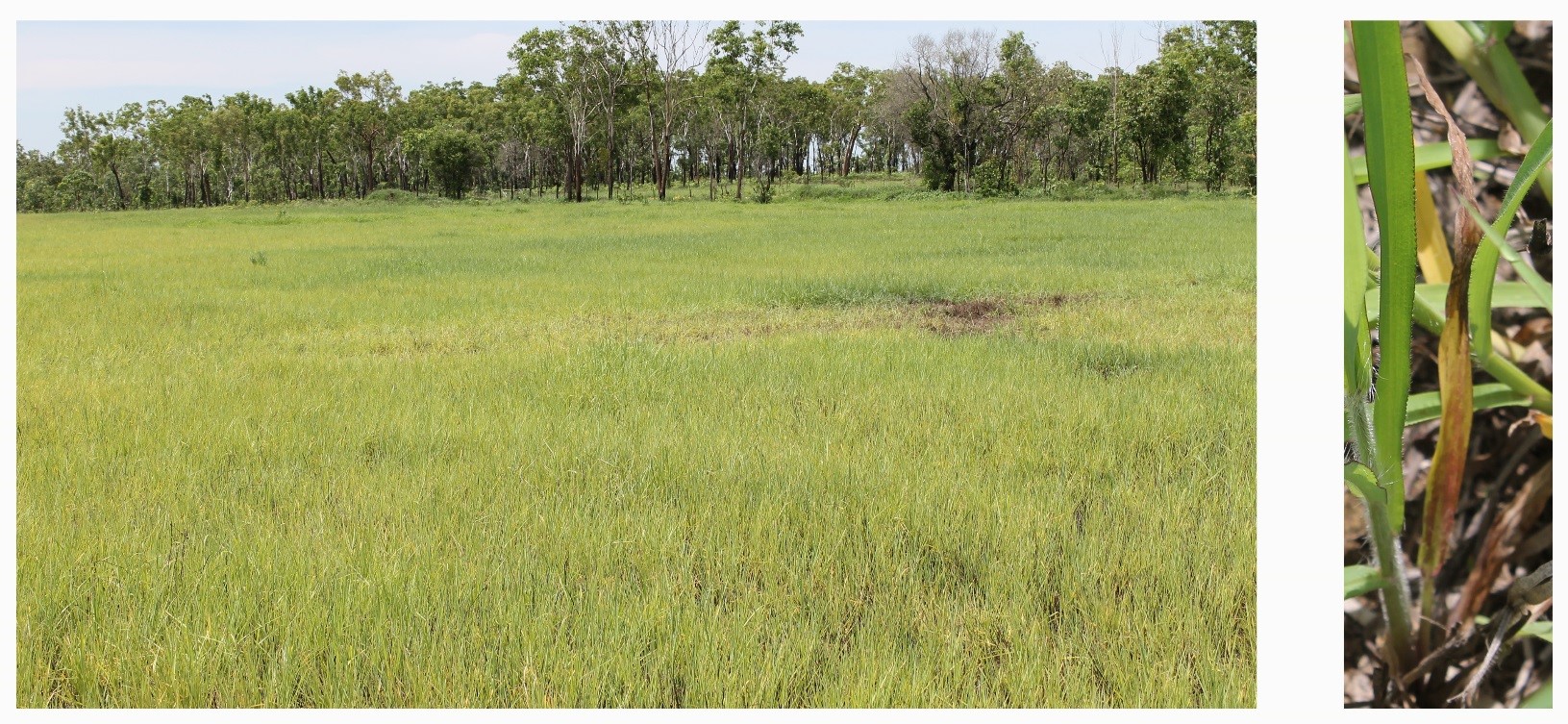Identifying potassium deficiency in hay paddocks
Arthur Cameron, Principal Pastures Agronomist, Darwin
Figure 5. Potassium (K) deficiency in Jarra and K deficiency in Pangola grass. Note the yellow leaf blades with tip necrosis.
I recently visited a Top End property to inspect grass pasture hay paddocks. There was a nutrient deficiency in in the Pangola grass and Jarra Finger grass hay paddocks. This was diagnosed as potassium (K) deficiency from the symptoms observed in the paddocks. A potassium deficient pasture may have yellow appearance. On a plant level, the leaves have marginal and tip necrosis. This is, the edges and tips of the leaves turn yellow, then die, as shown in the images above.
A potassium deficiency is not unusual in the Top End hay crops, because most of our soils are low in potassium, and there is high removal in hay. Potassium is often about one per cent of dry matter. A 10 tonne crop of hay will remove 100 kg per hectare of K. The soil generally supplies about half of the hay crop requirements, but the other half needs to be applied as fertilisers.
In a ‘normal’ wet season, with prolonged periods of wet weather, K is released from the clays in the soil and is available to plants. In a dry wet season, this release may not happen, and the hay crop becomes K deficient, even if K fertiliser has been applied the previous year.
See the plant nutrient removal calculator article for more information on the approximate nutritional loss in crops.
For information on pasture crops visit the Northern Territory Government website
Give feedback about this page.
Share this page:
URL copied!
